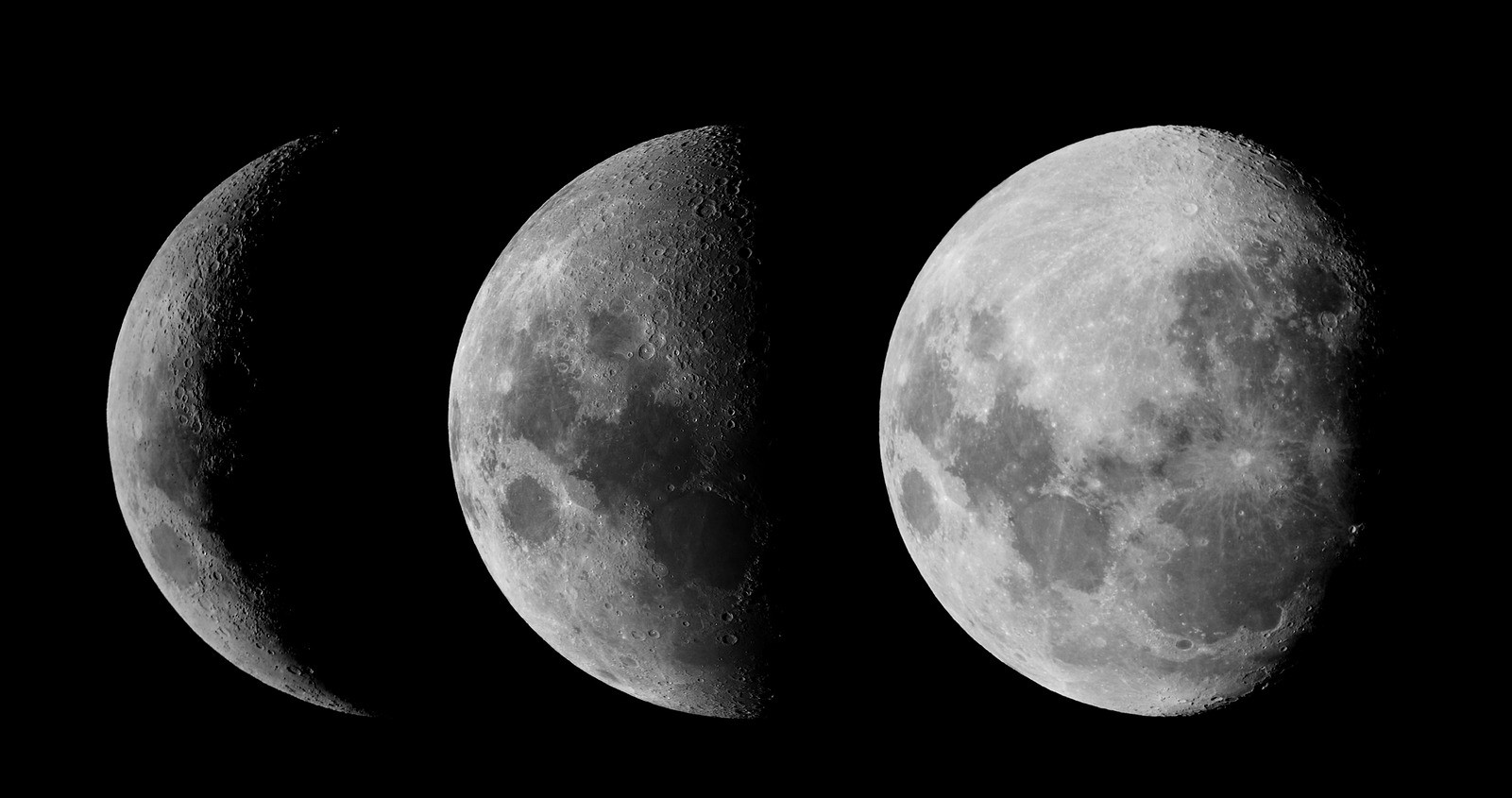Our Moon
Overview
The focus of this lesson and activity is to better understand our closest celestial object, the Moon. There are many underlying processes that make the Moon appear to us as it does. Throughout the activities students are encouraged to explore and demonstrate how and why these processes occur. Rotation, phases and eclipses can all be illustrated by students with a few simple materials. A staple in the images of the Moon is its craters and the cause and formation of the Moon’s craters are also examined in this lesson.
Background information
The Moon is Earth’s only natural satellite i.e. it orbits us and is not human-made. In comparison to the Sun, our Moon is around 400 times smaller and 400 times closer. When looking up at the Moon we only see one face meaning we have only ever seen about 60% of the Moon from Earth. This is why there exists the phrase ‘Dark side of the Moon’, but why is this and how is it explained?
The Moon is rotating on its own axis but it is relatively slow. The Earth does one rotation every 24 hours, hence why we have days. The Moon, however, only does one rotation every 27 days, which matches closely with the time it takes the Moon to orbit the Earth. This means that as it moves around Earth it is also spinning slowly and so its other face cannot be seen.
Not only is just one face visible to us, sometimes we see the whole face, sometimes only a small portion. This is called the Moon’s phases, it depends on how sunlight hits the Moon and how much of that reflected light can be seen from Earth. The Moon has eight phases and the Lunar cycle takes around 29 days. It starts as a new moon not visible as it is back-lit, then the waxing crescent followed by the first quarter then waxing gibbous. As the cycle comes to its half point a full moon is visible. Then as the full moon fades, there is the waning gibbous, third quarter and waning crescent. The cycle then repeats.

Some of the phases of the Moon
There are two kinds of eclipses; solar and lunar eclipses. A solar eclipse occurs when the Moon blocks the straight path of light from the Sun to the Earth. This means a short period of daytime darkness in an area on the Earth. A lunar eclipse is when the Earth blocks the straight path of light from the Sun to the Moon, and light cannot be reflected off the Moon. The Moon can appear red in colour during an eclipse and this is due to light being refracted (bent) and filtered through Earth’s atmosphere which is then reflected by the Moon – similar to the way we can get a red colour in the sky at sunrise or sunset.
A lunar crater is created when an asteroid hits the Moon and leaves a mark, often exposing older darker rock and this, combined with shadows, is why the Moon has many shades. But why is it we see more craters on the Moon even though the Earth is a bigger target? This is due to the Moon’s lack of atmosphere, without atmosphere there is a lot less erosion and less protection. The Earth’s atmosphere can break up asteroids because of air resistance, as well as this the Earth has many processes of erosion and tectonics such as wind, sea tides, earthquakes and volcanoes that both diminish craters or destroy and create new crust.

Moon crater activity
Downloadable Resources Editable Presentation PPT
Editable Presentation PPT
